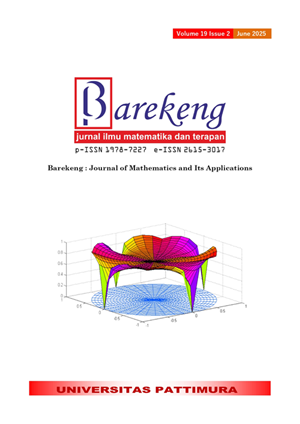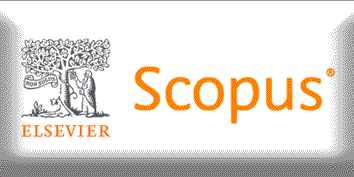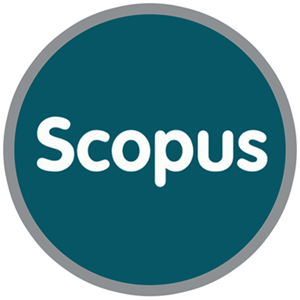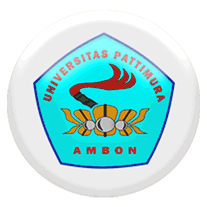ZERO INFLATED POISSON REGRESSION MODELS TO ANALYZE FACTORS THAT INFLUENCE THE NUMBER OF MEASLES CASE IN JAVA
Abstract
Measles is an infectious disease that often occurs in children and is caused by the measles virus (morbillivirus) which can cause death. Thus, it is important to identify the factors that cause measles. The number of measles cases is used as response variable in the form discrete data so that Poisson Regression is commonly used. However, some assumptions are sometimes not met, such as overdispersion and excess zero so that can use Zero Inflated Poisson Regression to meet these assumptions. Because the model can overcome two common characteristics that are often found in count data, which are excess zero and overdispersion. The purpose of this study was to determine the factors that influence the number of measles cases in East Java. The data in the study used secondary data obtained from the Central Statistics Agency (BPS). The predictor variables used were the number of population, percentage of vaccination, percentage of poor people, and percentage of adequate sanitation. The results showed that the data is overdispersed because the variance is greater than the mean. There were four predictor variables, The -value of the total population variable is <0.01, the percentage of vaccinations is 0.914, the percentage of poor people <0.01 and the percentage of proper sanitation is 0.014 so it can be concluded that the percentage of vaccinations has no effect on the number of measles cases and the other three variables affect the number of measles cases in East Java. The best model of affect the number of measles cases in East Java is Zero Inflated Poisson with AIC value 326.24. The ZIP model for measles case in East Java is .
Downloads
References
K. R, “PENYAKIT CAMPAK,” perpustakaankemenkes.go.id, Online, Agustus 2022.
A. A. Minta et al., “PROGRESS TOWARD MEASLES ELIMINATION — WORLDWIDE, 2000–2022,” MMWR Morb. Mortal. Wkly. Rep., vol. 72, no. 46, pp. 1262–1268, Nov. 2023, doi: 10.15585/mmwr.mm7246a3.
S. Chacko et al., “PROGRESS TOWARD MEASLES AND RUBELLA ELIMINATION — INDONESIA, 2013–2022,” MMWR Morb. Mortal. Wkly. Rep., vol. 72, no. 42, pp. 1134–1139, Oct. 2023, doi: 10.15585/mmwr.mm7242a2.
A. Riantina, Najma, and R. J. Sitorus, “ANALYSIS OF RISK FACTORS AFFECTING THE INCIDENT OF MEASLES IN INDONESIA: LITERATURE REVIEW,” J. Nurs. Public Health, vol. 12, no. 1, Apr. 2024.
A. Rahayu, “MODEL-MODEL REGRESI UNTUK MENGATASI MASALAH OVERDIPERSI PADA REGRESI POISSON,” J. Peqguruang Conf. Ser., vol. 2, no. 1, p. 1, Jun. 2021, doi: 10.35329/jp.v2i1.1866.
H. Ihsan, W. Sanusi, and R. Ulfadwiyanti, “MODEL GENERALIZED POISSON REGRESSION (GPR) DAN PENERAPANNYA PADA ANGKA PENGANGGURAN BAGI PENDUDUK USIA KERJA DI PROVINSI SULAWESI SELATAN,” J. Math. Comput. Stat., vol. 3, no. 2, p. 109, Feb. 2021, doi: 10.35580/jmathcos.v3i2.19190.
Tasya Azzahra, “PEMODELAN REGRESI HURDLE NEGATIVE BINOMIAL PADA JUMLAH KASUS DIFTERI JAWA BARAT 2020,” J. Ris. Stat., pp. 125–130, Dec. 2023, doi: 10.29313/jrs.v3i2.3014.
I. Amarita and N. Hajarisman, “PENERAPAN MODEL REGRESI ZERO INFLATED NEGATIVE BINOMIAL PADA KASUS CAMPAK DI PROVINSI JAWA BARAT TAHUN 2020,” Bdg. Conf. Ser. Stat., vol. 3, no. 2, pp. 737–744, Aug. 2023, doi: 10.29313/bcss.v3i2.9311.
M. Sriningsih, D. Hatidja, and J. D. Prang, “PENANGANAN MULTIKOLINEARITAS DENGAN MENGGUNAKAN ANALISIS REGRESI KOMPONEN UTAMA PADA KASUS IMPOR BERAS DI PROVINSI SULUT,” J. Ilm. SAINS, vol. vol.18, no. 1, no. 1, p. 18, Jul. 2018, doi: 10.35799/jis.18.1.2018.19396.
A. A. R. Fernandes and Solimun, ANALISIS REGRESI DALAM PENDEKATAN FLEKSIBEL (ilustrasi dengan Paket Program R). 2021, UB Press.
A. Rahayu, “MODEL-MODEL REGRESI UNTUK MENGATASI MASALAH OVERDIPERSI PADA REGRESI POISSON,” J. Peqguruang Conf. Ser., vol. 2, no. 1, p. 1, Jun. 2021, doi: 10.35329/jp.v2i1.1866.
V. Eminita, A. Kurnia, and K. Sadik, “PENANGANAN MULTIKOLINEARITAS DENGAN MENGGUNAKAN ANALISIS REGRESI KOMPONEN UTAMA PADA KASUS IMPOR BERAS DI PROVINSI SULUT,” FIBONACCI J. Pendidik. Mat. Dan Mat., vol. 5, no. 1, p. 71, Jul. 2019, doi: 10.24853/fbc.5.1.71-80.
D. P. Prami Meitriani, K. G. Sukarsa, and I. P. E. N. Kencana, “PENERAPAN REGRESI QUASI-LIKELIHOOD PADA DATA CACAH (COUNT DATA) YANG MENGALAMI OVERDISPERSI DALAM REGRESI POISSON,” E-J. Mat., vol. 2, no. 2, p. 37, May 2013, doi: 10.24843/MTK.2013. v02.i02.p036.
N. S. N. Ihsan and N. Hajarisman, “PENERAPAN MODEL REGRESI ZERO-INFLATED POISSON PADA KASUS KEMATIAN BAYI DI KOTA BANDUNG TAHUN 2020,” Bdg. Conf. Ser. Stat., vol. 3, no. 2, Jul. 2023, doi: 10.29313/bcss.v3i2.8042.
A. D. Aprilia, “REGRESI ZERO INFLATED POISSON UNTUK PEMODELAN ANGKA POSITIF PENYAKIT MALARIA DI JAWA TIMUR,” J. Ilm. Mat., 2023.
K. Tawiah, S. Iddi, and A. Lotsi, “ON ZERO-INFLATED HIERARCHICAL POISSON MODELS WITH APPLICATION TO MATERNAL MORTALITY DATA,” Int. J. Math. Math. Sci., vol. 2020, pp. 1–8, Dec. 2020, doi: 10.1155/2020/1407320.
N. Giarsawan, I. W. S. Asmara, and A. E. Yulianti, “FAKTOR-FAKTOR YANG MEMPENGARUHI KEJADIAN CAMPAK DI WILAYAH PUSKESMAS TEJAKULA I KECAMATAN TEJAKULA KABUPATEN BULELENG TAHUN 2012,” J. Esehatan Lingkung., vol. 4, no.2, pp. 140–145, Nov. 2014.
F. H. Ramadhani, R. Azizah, J. Jalaludin, S. Martini, and L. Sulistyorini, “META-ANALYSIS AND SYSTEMATIC REVIEW: RISK FACTORS OF MEASLES INCIDENCE IN INDONESIA (2012 – 2021),” J. Kesehat. Masy., vol. 19, no. 1, pp. 138–148, Jul. 2023, doi: 10.15294/kemas.v19i1.43060.
Copyright (c) 2025 Candra R. W. S Weni Utomo, Achmad Efendi, Ni Wayan Surya Wardhani

This work is licensed under a Creative Commons Attribution-ShareAlike 4.0 International License.
Authors who publish with this Journal agree to the following terms:
- Author retain copyright and grant the journal right of first publication with the work simultaneously licensed under a creative commons attribution license that allow others to share the work within an acknowledgement of the work’s authorship and initial publication of this journal.
- Authors are able to enter into separate, additional contractual arrangement for the non-exclusive distribution of the journal’s published version of the work (e.g. acknowledgement of its initial publication in this journal).
- Authors are permitted and encouraged to post their work online (e.g. in institutional repositories or on their websites) prior to and during the submission process, as it can lead to productive exchanges, as well as earlier and greater citation of published works.






1.gif)



